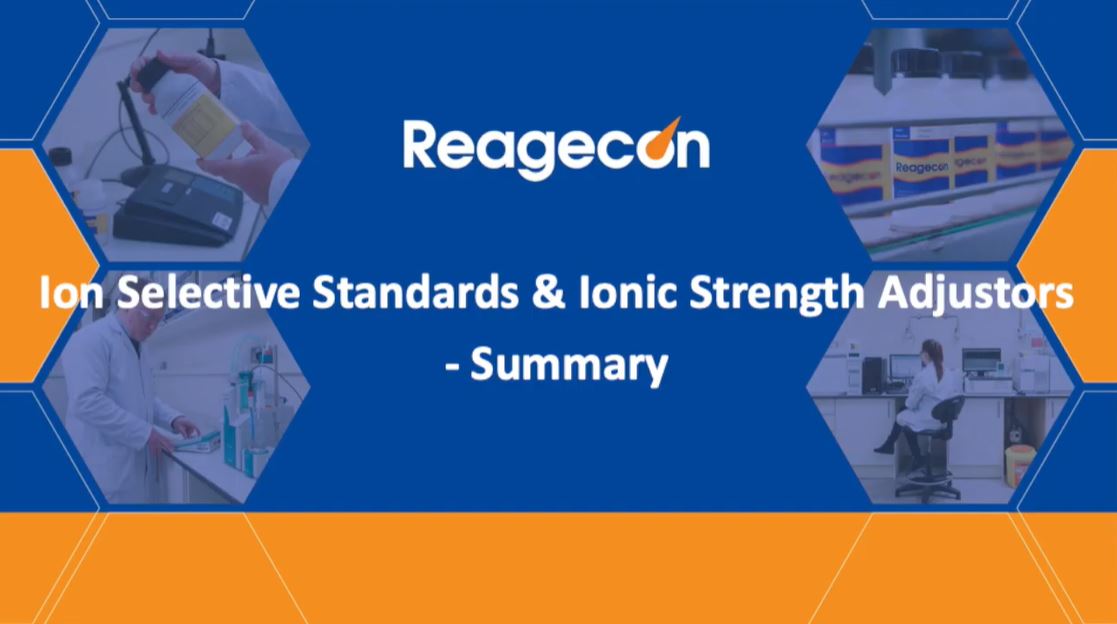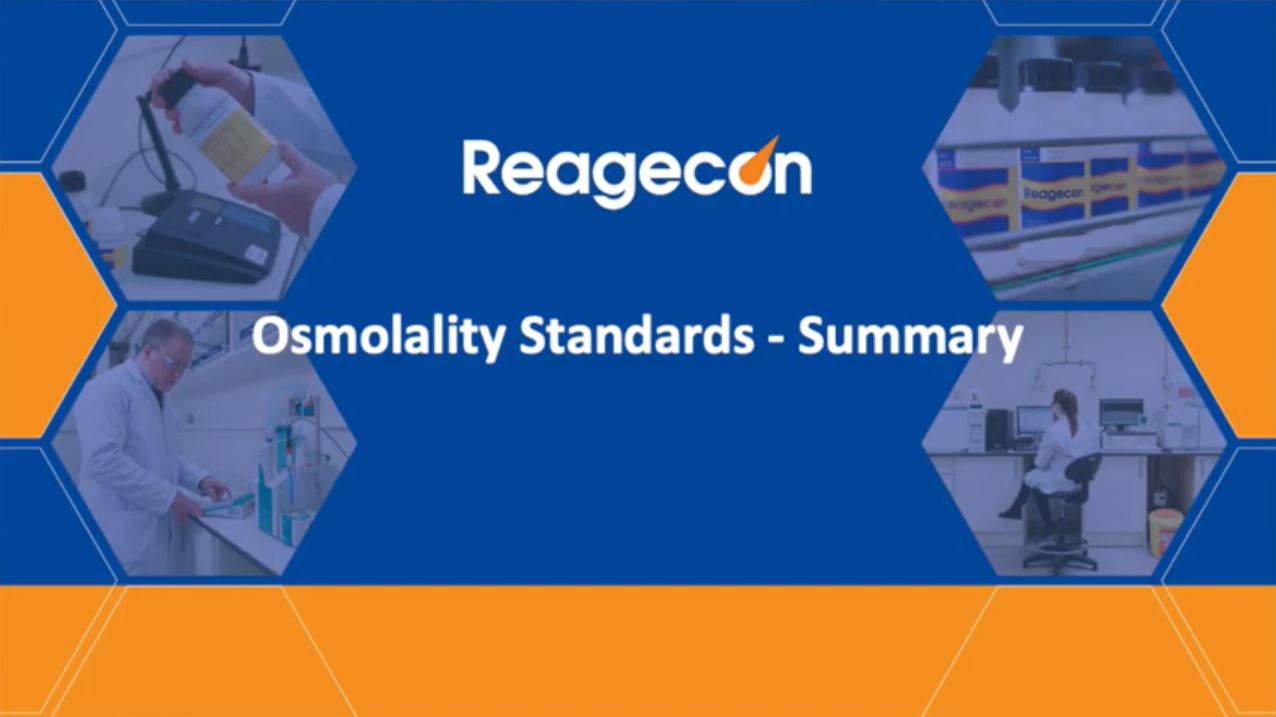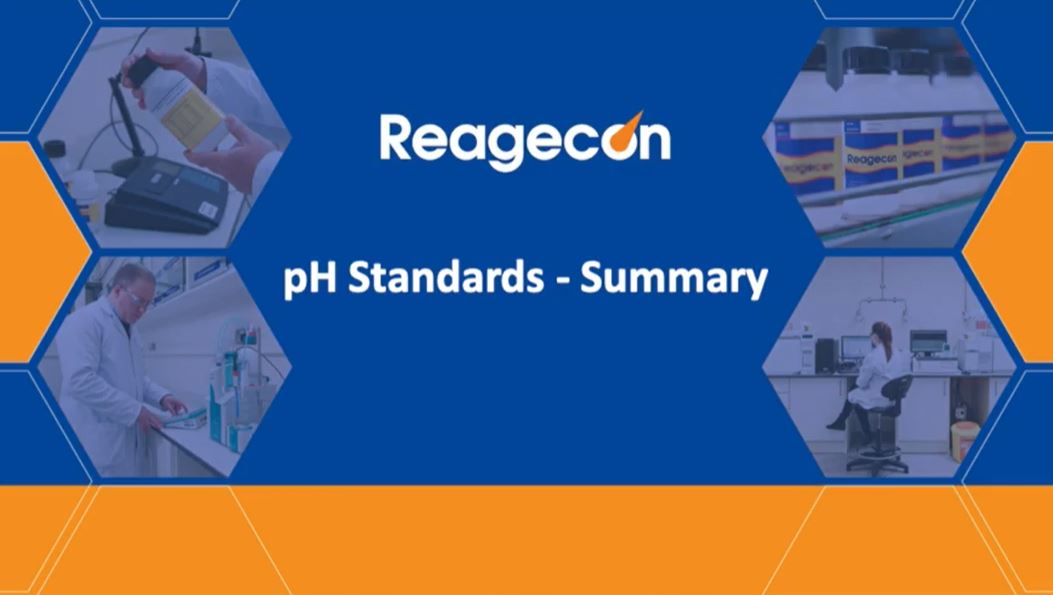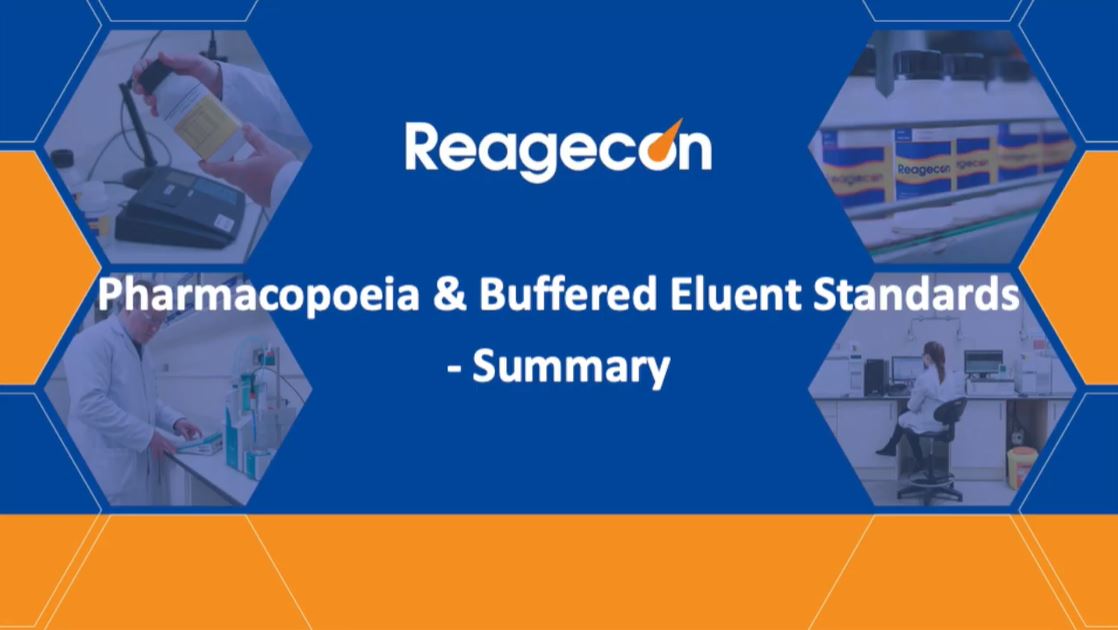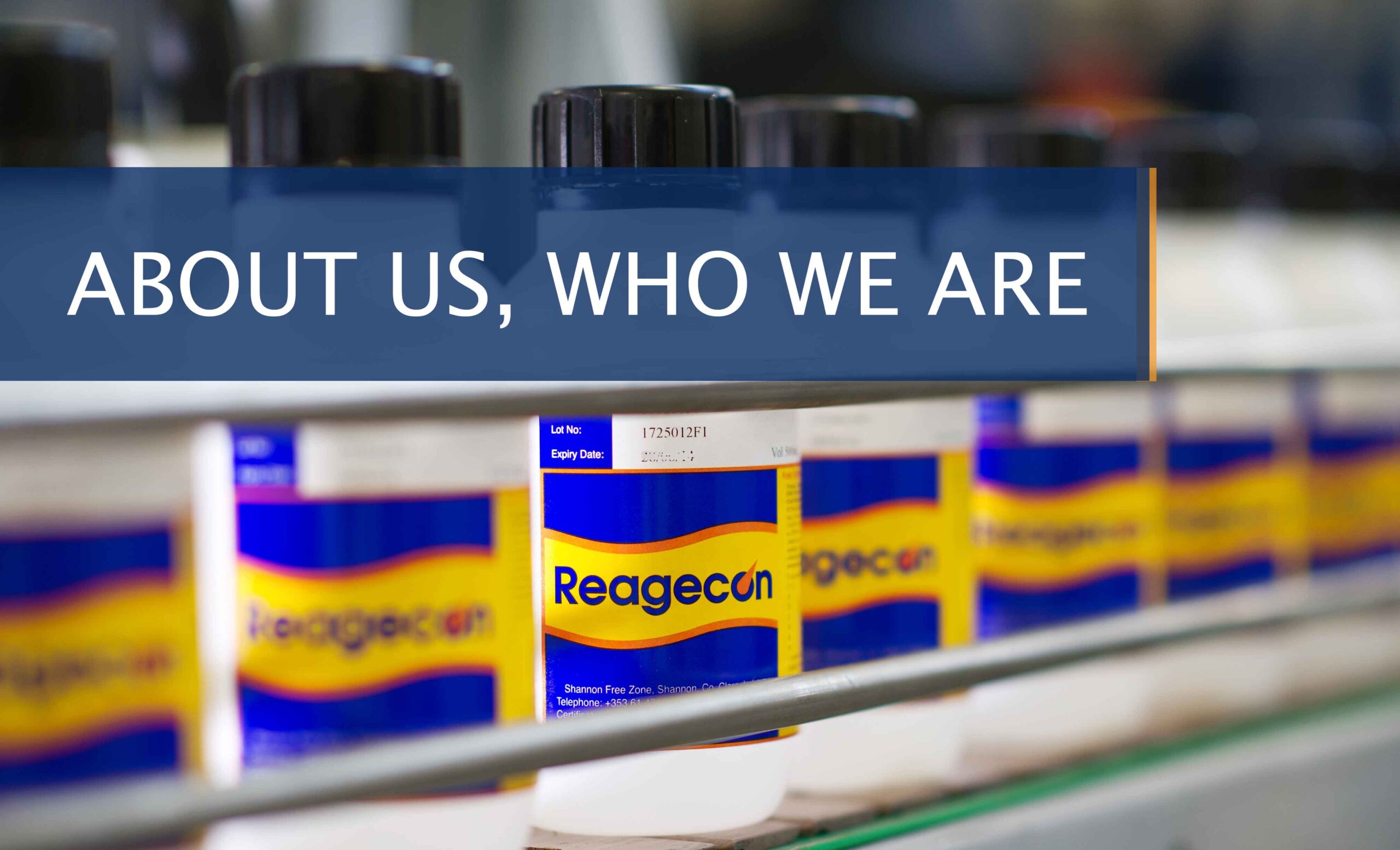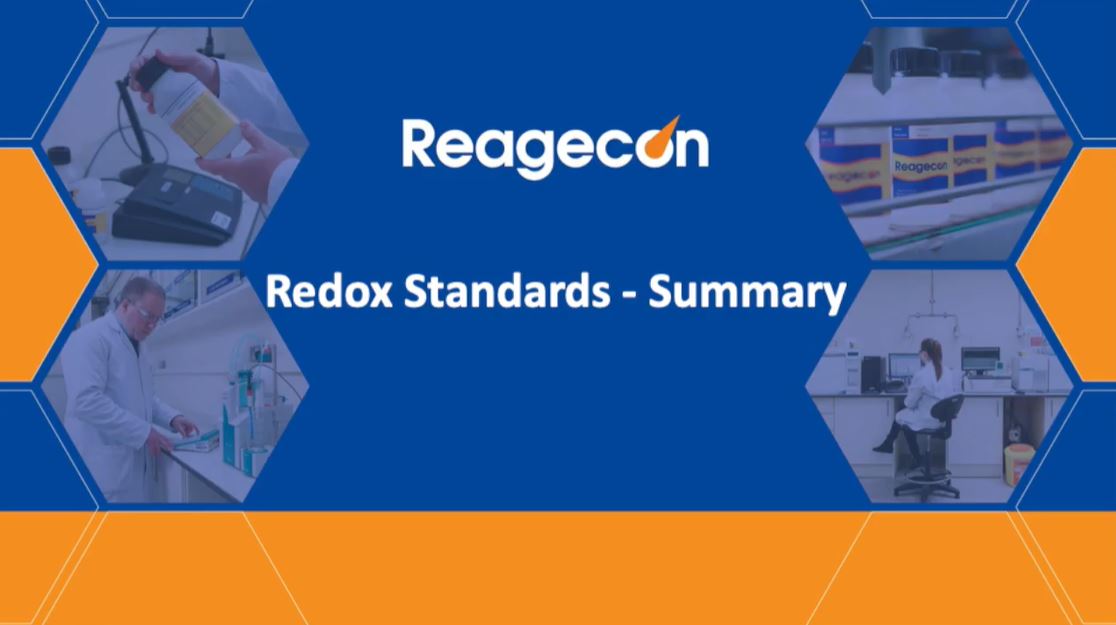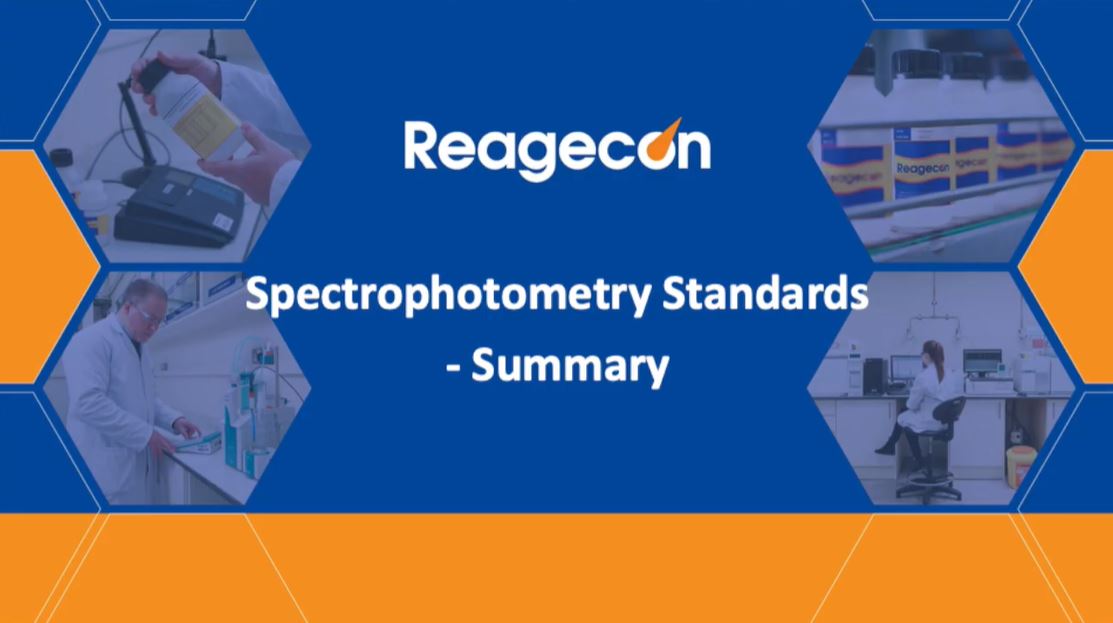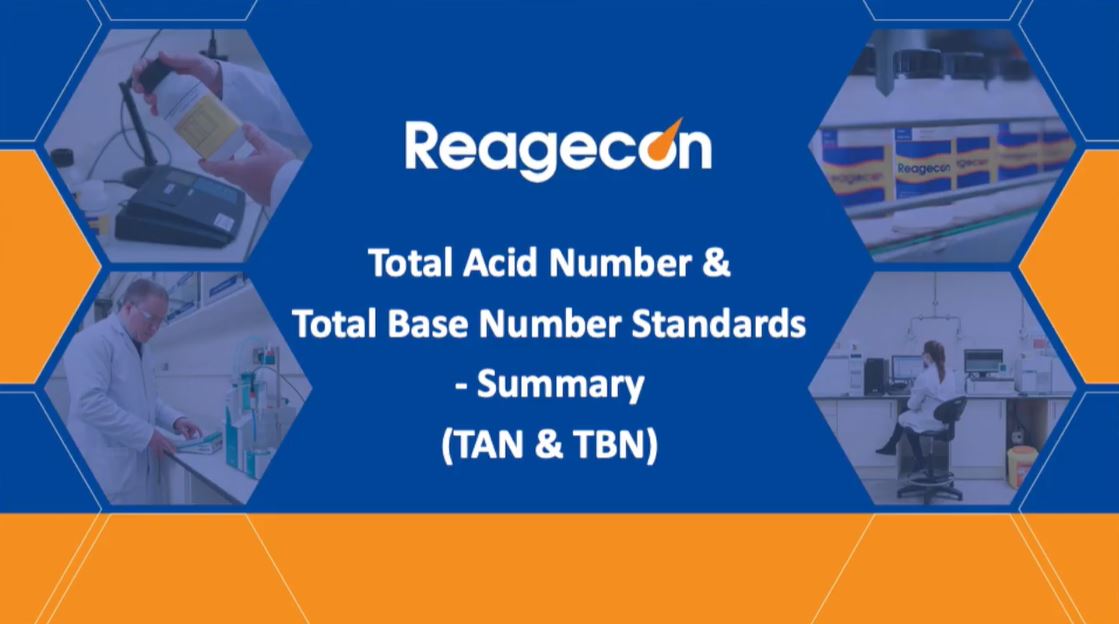Webinars and Videos
Webinars and training videos from Reagecon.
Ion Selective Electrode (ISE) and Ionic Strenght Adjuster (ISA) Standards
This short video provides viewers with an overview and short summary of Ion Selective Electrode (ISE) and Ionic Strenght Adjuster (ISA) Standards.
Ion Selective Electrodes, (ISEs) allow specific and quantitative measurement of a wide range of cations, anions and some dissolved gases. These ions can be measured directly like pH measurement, indirectly, which we will discuss later, or by titrimetry. ISEs respond selectively to the relevant ion activity exactly like pH electrodes respond to hydrogen ion activity. However, the measurement technique deviates from pH in that both sample and standards require the addition of an Ionic Strength Adjustor called for short an ISA.
Melting Point Standards
This short video provides viewers with an overview and short summary of Melting Point Standards.
The Melting Point of a substance is the temperature at which the crystalline phase of the substance changes to its liquid phase. Melting point is defined as the temperature at which the solid and liquid are in equilibrium at a total pressure of 1 atmosphere. Unlike the volume change that accompanies the vaporization of a liquid, the change in volume that takes place upon the melting of a solid is very small.
Osmolality Standards
This short video provides viewers with an overview and short summary of Osmolality Standards. It briefly describes how Osmolality is determined, measured and calibrated.
pH Buffer Solutions
This short video provides viewers with an overview and short summary of pH Buffers Solutions. It briefly describes what pH buffers are and their uses
Accurate and fit for purpose pH measurement is dependent on a number of factors and the quality of the pH buffers or calibrants is one such factor. However, calibration of the instrument is not the only function of high-quality pH buffers. Such buffers have a role in quality control, method validation and instrument qualification.
The characteristics of what constitutes a high-quality pH buffer selection is presented, with particular emphasis on the metrological aspects. This includes traceability, stability, accreditation and certification.
Pharmacopeia and Buffered Eluent Standards
This short video provides viewers with an overview and short summary of Reagecon’s Pharmacopoeia offering including Buffered Eluents and Dissolution Buffers.
Pharmaceutical preparations and testing methods are dictated and described by the pharmacopoeias. A Pharmacopoeia is a book containing directions for the analysis methods of samples and preparation of compound medicines; it is published by the authority of a government or a medical or pharmaceutical society. Pharmaceutical products no matter where they are manufactured have to comply with the applicable pharmacopoeia namely US pharmacopoeia, European pharmacopoeia, Japanese pharmacopoeia, Chinese pharmacopeia or others.
Reagecon Corporate Video 2021
This video provides viewers an insight into Reagecon the business, the Reagecon product range and Reagecon the company. Reagecon is an innovative, growth oriented, dynamic, family owned business and is the largest producer worldwide of chemical standards, physical standards and reagents all of which are developed, manufactured and distributed from the Reagecon facility in the West of Ireland.
Such materials can be used for calibration, quality control, method validation, instrument qualification, verification and analyst qualification. We hope you find this compendium beneficial; that the products on offer match your technical specifications; represent value for money and that they will greatly enhance your ability to achieve valid and correct analytical results now and in the future.
Redox Standards
This short video provides viewers with an overview and short summary of Redox Standards.
Redox potential is measured by a redox electrode which is capable of absorbing or releasing electrons. The material of the electrode does not react with or alter the chemistry of the reaction. When measuring with an ORP electrode, electrons flow from the electrode to the sample or other solution and vice versa simultaneously. It is this activity that is being measured and this is temperature dependant and sometimes pH dependant.
Refractive Index and Brix Standards
This short video provides viewers with an overview and short summary on Refractive Index and Brix Standards.
Firstly, to either identify or confirm the identity of a sample by comparing its refractive index to known values. Such known values can be derived experimentally, taken from the technical or scientific literature, or obtained from the manufacturer of the liquid. Secondly, Refractive index may be used to assess the purity of a sample by comparing the refractive index of the sample to the known value for the pure substance. Thirdly, Refractive index can be expressed in BRIX values for the measurement of the sugar content of sugar rich samples such as jams, jellies, syrups and fruit juices. The BRIX value correlates to the sugar concentration in the sample measured and is expressed as the number of grams of sucrose in 100 grams of sucrose/water solution. The relationship between the refractive index and BRIX is determined by the International Commission for Uniform Methods of Sugar Analysis (ICUMSA).
Spectrophotometry Standards
This short video provides viewers with an overview and short summary of Reagecon’s Spectrophotometry Standards offering.
A spectrophotometer, as an analytical tool is used in almost every type of chemical, biological or life science laboratory. Like all instrumentation they require regular checking and validation to a greater or lesser extent.
The parameters tested for spectrophotometers are photometric accuracy also called (absorbance linearity), wavelength accuracy, bandwidth and stray light. These checks and validation protocols, ensure confidence in all operational and performance matters and are also mandated in many cases by accreditation and regulatory bodies.
Total Acid Number (TAN) and Total Base Number (TBN)
This short video provides viewers with an overview and short summary of Total Acid Number (TAN) and Total Base Number (TBN).
TAN and TBN are critical parameters in lubricating oil and are also measured in a wide range of other petrochemicals. The measurement is a quantification of the acidic or basic impurities, is tested by non aqueous titration and the units used to express both TAN and TBN are milligrams/gram of potassium hydroxide. There are a number of specified methods and a change in method may result in a change of test result. However, the most commonly used methods are those specified by ASTM.

